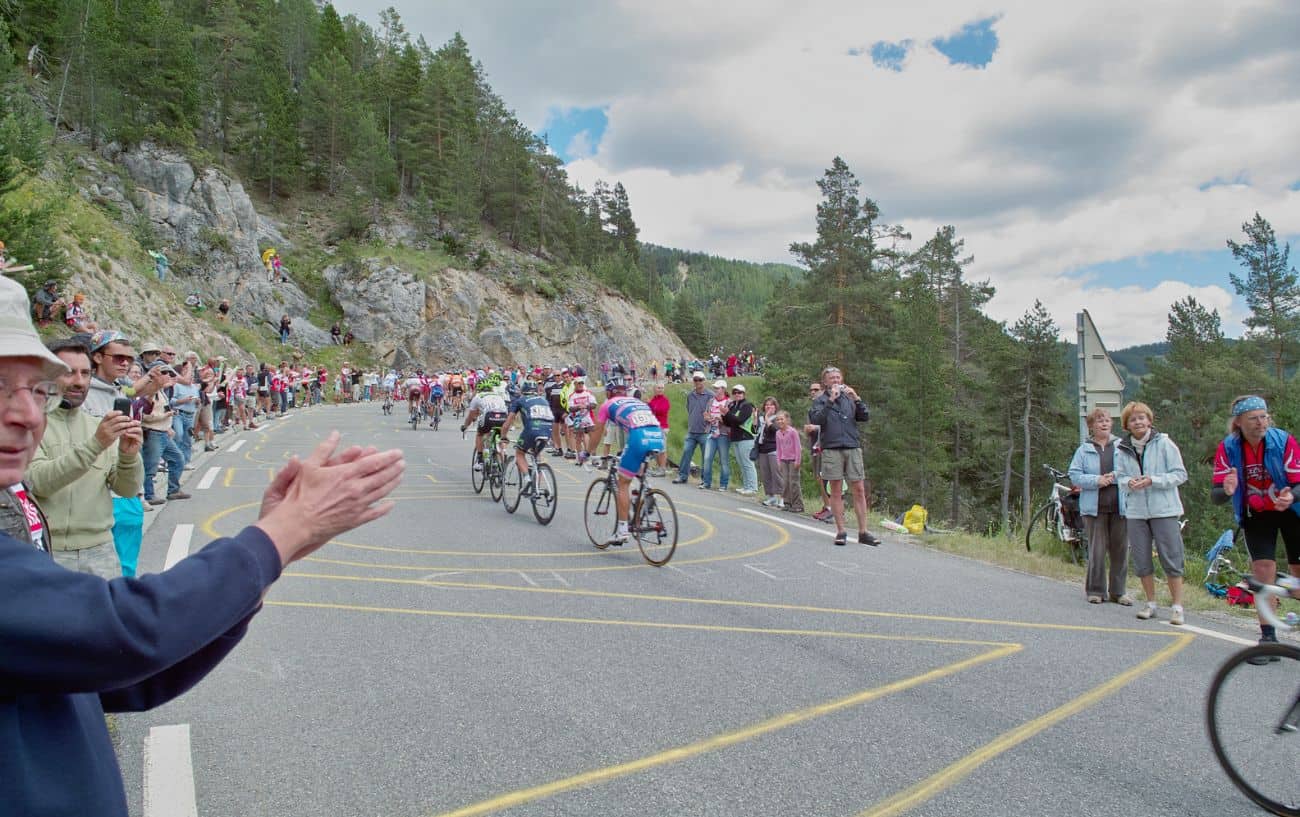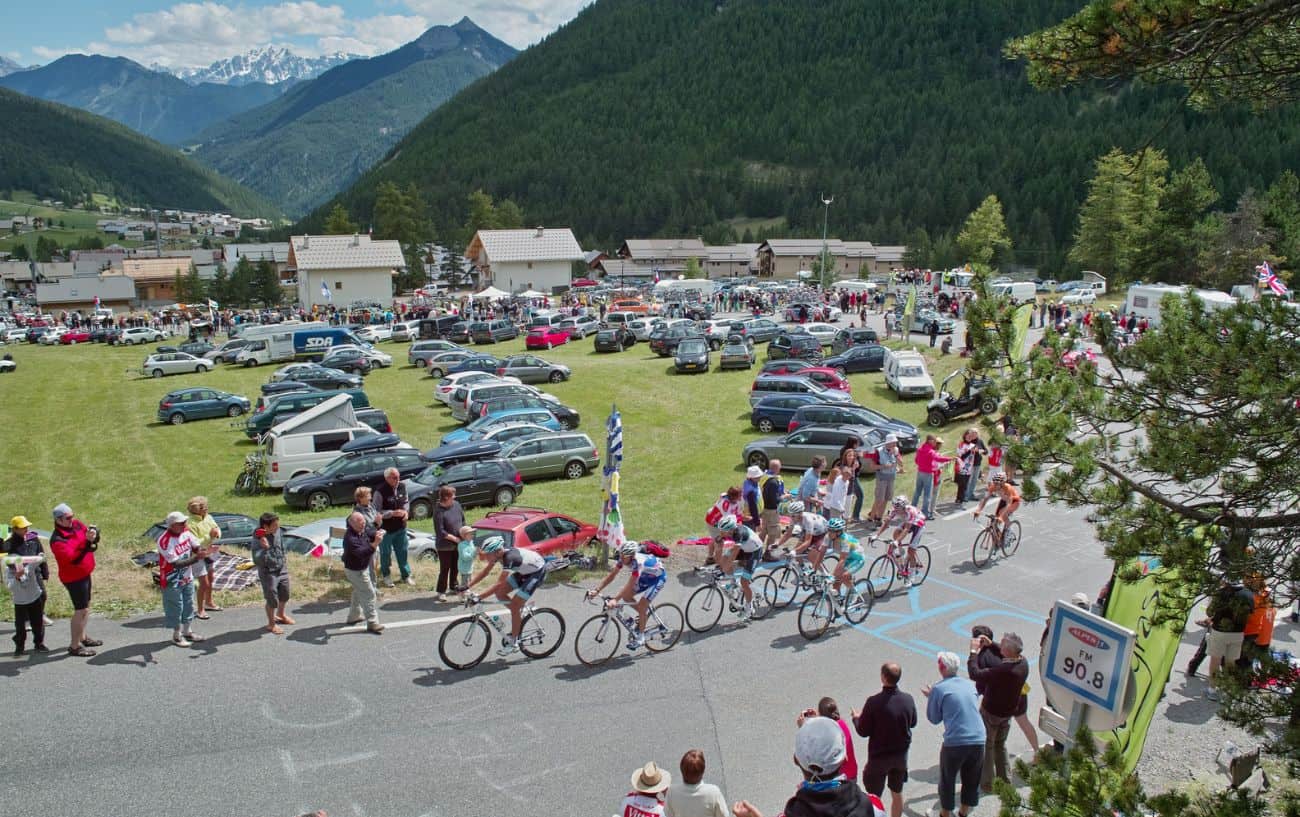There are many different metrics you can track as a cyclist, such as your speed, power, and heart rate – to name a few.
Monitoring these metrics helps quantify the amount of work you’re doing on the bike, and gives you a window into the intensity of your workouts, your fitness progress, and the effectiveness of your training plan to help you reach your goals.
One valuable but often-overlooked metric to consider with your cycling workouts is VAM. It stands for “Velocità Ascensionale Media” in Italian, which translates to “Average Climbing Speed”.
Crucially, it’s a measure of your vertical speed, rather than your horizontal speed (like most conventional speed measurements).
You might have even seen a field for VAM for segments on Strava or other cycling apps for categorized climbs, but if you’re unfamiliar with how to use cycling VAM to inform your training, you might be missing a trick!
In this article, we will cover the basics of VAM cycling and how to use cycling VAM to improve your climbing and cycling performance, covering:
- The Background: What Is VAM?
- What’s The Point Of VAM Cycling Scores?
- The Relationship Between VAM Cycling and Power
- How To Use Cycling VAM To Estimate Relative Power
- How Else Can You Use VAM To Boost Your Cycling?
- What Is a Good VAM Score?
- How To Get A High VAM Score
Ready for the lowdown on VAM cycling?
Let’s jump in!

The Background: What Is VAM?
If you use any sort of cycling computer or track your rides with cycling apps like Strava, you probably have a good idea of your average cycling speed.
Whether you like your speed reported in mph or km/h, any standard cycling speed unit is a measure of your horizontal speed – how fast you’re moving forward from point A to point B.
By contrast, VAM is a measure of your vertical speed on the bike.
The term VAM was first coined by the disgraced Italian cycling coach Dr. Michele Ferrari, who was the architect of Lance Armstrong’s doping program among other scandals. It’s an acronym for “Velocità Ascensionale Media” (“Average Climbing Speed” in English).
VAM is also sometimes translated into English as “Vertical Ascent in Meters”. It’s a measure of the rate of your elevation gain as a one-hour average, rather than the flat distance covered.
Your VAM speed is calculated by dividing the vertical height you climb by the length of time it takes you to do it.
So, if you’re climbing at a VAM rate of 1000 m/h, you would climb 1000 meters of elevation in an hour. Likewise, climbing 500 vertical meters in 30 minutes would also give you a VAM of 1000 m/h.

What’s The Point Of VAM Cycling Scores?
Since VAM is a measure of vertical speed, VAM is only relevant when you’re climbing hills.
VAM can be used both as a measure of climbing performance on the bike and overall fitness. VAM scores can help you compare your climbing performance between different ascents or overall rides.
As might be expected, shorter climbs will typically have higher VAM rates because you can maintain a higher power output over a shorter time duration. VAM scores also tend to be higher for steep climbs than gradual ones because the VAM increases exponentially with the gradient.
While certainly not restricted to this range, VAM as a metric is generally thought to be most revealing on hills with a gradient between 6-15%.
Of course, you can compare your VAM scores over time on the same hill you ride regularly, which is a great way to track your fitness progress.
You can also compare VAM on different hills, so that you can see which hill you performed better on, bearing in mind that different hills have different gradients and lengths.
When comparing VAM performance on different types of hills, cyclists with better endurance will likely have a higher VAM on longer, more gradual hills, while a sprint rider or cyclocross rider will probably have a higher VAM on short, steep climbs.

The Relationship Between VAM Cycling and Power
Although it’s more common to look at VAM after a ride in your post-ride analysis, there’s also utility in looking at real-time VAM scores while you’re riding.
An increasing number of multi-sport GPS watches and cycling computers display real-time VAM, including popular options like the Wahoo ELEMNT Bolt and many Garmin models.
If you don’t have a power meter on your bike, your VAM can be a decent substitute for gauging your performance. You can also use VAM to calculate your relative power based on your weight.

How To Use Cycling VAM To Estimate Relative Power
Not only can VAM be used as an indicator of fitness and climbing performance, but it can also be useful for making fairly objective comparisons of climbing performances and estimating the cyclist’s relative power output (watts per kilogram of body mass).
Ignoring friction and the weight of the bike, relative power, or power per unit of body mass (watts per kilogram), can be calculated by multiplying VAM by the acceleration of gravity, g. The formula is as follows, with gravity (g) as the constant 9.8 m/s2:
- P (watts/kg) = VAM x g
To account for the extra mass of the bike and the loss of power through friction, you can use the following formula to get an even better idea of your relative power output:
- Relative power = VAM (m/h) / (200 + 10 × % climbing gradient)
Let’s look at some numbers as an example. For instance, if the VAM is 1000 m/h and the climb has a 6% gradient:
- Relative power = 1000 / (200 + 10 x 6) = 3.84 watts/kg
However, if the VAM is 1000 m/h but the climb has a 10% gradient:
- Relative power = 1000 / (200 + 10 x 10) = 3.33 watts/kg.
As you can see, relative power is lower for the steeper climb at the same VAM.

How Else Can You Use VAM To Boost Your Cycling?
Relative cycling power is a very useful metric for the individual rider, but because it’s based on the weight of the rider, relative power can’t easily be applied across the board as a shared target for everyone on the team or group climbing a hill.
The number of Watts you push per kilogram will different between riders of different sizes at the same speed.
However, VAM can be applied unilaterally as a target for everyone on the ride.
It’s also easier to target a particular VAM rate over an undulating climb on which the gradient is constantly changing than a particular target speed, because you can still hit the same VAM even as you inevitably slow down on the steepest sections.
VAM can also be used in place of power when your power meter malfunctions or if you’re riding a rental without a power meter.
If you don’t have a power meter on your bike, you can use VAM to build a workout.
For instance, with a power meter, you might decide to do a 20-minute time trial and then use the average power during that time to determine your target power for a 3 x 15-minute threshold interval (say at 95%).
If you don’t own a power meter, you could do a 20-minute hill climb instead of a time trial and then use that VAM to help replicate a similarly challenging threshold workout.
For simplicity, let’s say the VAM for the hill climb is 1000 m/h. Then, you could do 3 x 15 minutes at 950 m/h.
You can also use VAM to inform how hard you should be climbing and working on different hills.
If, for example, you know you can sustain a VAM of 900 m/h over a one-hour climb, you might aim to achieve at least a 5-10% higher VAM on a 20-minute climb.

What Is a Good VAM Score?
So, what is a good VAM for cyclists?
As might be expected, there are some pretty impressive VAM scores. Seven-time Grand Tour champion Chris Froome, for example, is said to have clocked a VAM over 1800 m/h.
In the Tour de France, most riders in the top ten typically achieve a VAM around 1650-1800 m/h, whereas those finishing around 10th-20th might be closer to 1450-1650 m/h.
The VAM for the “autobus” (the group of riders at the back just trying to finish within the time cut on a mountainous stage) in the Tour is typically around 1100-1300 m/h.
Most club cyclists will probably have a VAM closer to 700-900 m/h.

How to Get a Good VAM Score
The best way to get a super high VAM score is to look for short, steep climbs and attack them as hard as possible.
Try to find a climb that will take an effort of about one minute. Look for a climb under 1 km with an average gradient of 12-15% or more.
After a warm-up ride, hit the hill with everything you’ve got. Make sure you have as little gear as possible on your bike.
Ultimately, it’s important to remember that the usefulness of VAM scores in tracking your improvements in fitness is mostly confined to comparing your scores on the same hills over time.



